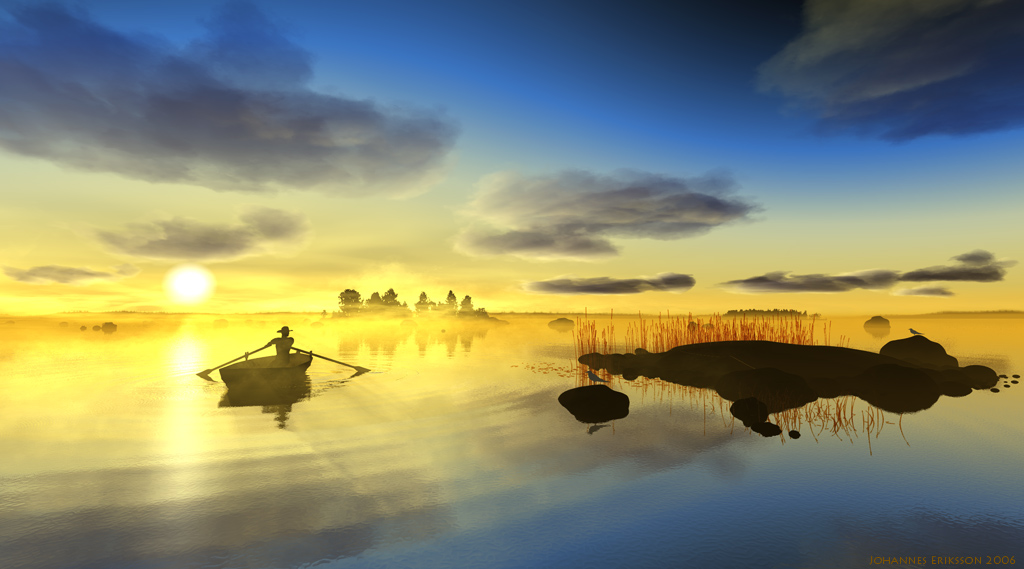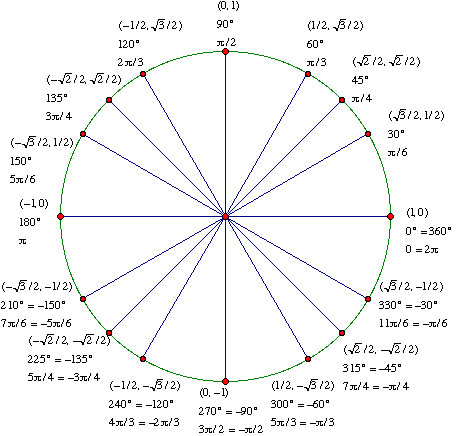Introduction
Activity
Download handout and code to create an Xcode executable OpenGL console application.
Image Generation?
In a small group, for each of the following images, identify whether it is a photograph, a computer generated image or a painting. What "quality" of the image governed your identification? Jot down your justifications and hand in at the end of class.
Sunset

Fisherman

Whiskers

Pebbles

Glasses

Water

Head

Car

Bolts

Animations taken from the Electronic Theatre Archive of SiGGraph
The generation
of a CG image is a process that might be depicted as What needs to be modeled? What programming language and data structures will be used? Which rendering algorithm will be used (tightly linked to GL API)? - do
we want photo-realism or real-time animation/simulation? Where is the image
displayed on the screen? Is user interaction
supported? These questions and many
others are addressed in this course. (Modeling is challenging!) This course addresses both
2-D and 3-D modeling concepts necessary for introductory CG
image generation. Q1:
What needs to be modeled? (Identify the elements that are
necessary to display a computer generated image.) Q2:
What is the correct mathematical model (for a unit circle
centered at the origin)? All objects in the scene
- position and dimension, materials, colors, textures,
collidable, ... Q2:
What is the correct mathematical model (for a unit circle
centered at the origin)? So? The equation for
a circle is continuous and an infinite number of points
define its circumference. How do we generate
points to display on the circle's circumference? x = r cos How many points
should be generated? What values of Yes we can, by taking
advantage of a circle's eight-way symmetry. Note that
the following image does not depict a unit circle but
the concept holds for all circles, centered at any
location. So, calculate one
point on the circumference and we get seven others
by merely changing signs and transposing (x, y). Given this
information, what values of Eight-way symmetry and a
simple incremental point algorithm,
attributed to Bresenham,
is typically implemented in hardware (more later). A GL
API might provide a circle primitive directly. If not, the
CG programmer should understand how to model, represent,
and generate circle points efficiently by taking advantage
of state of the art practices.
Modeling
Will precise mathematical models be necessary?
Can we use approximations? Why might this be necessary?Representation
What GL API is suitable for our needs?
Should we use an OS specific window toolkit or an OS independent toolkit?
Is a driver program needed for event handling?Render
How does the renderer process data?Display
How is the display
generated?
UI
How is user input
retrieved?
How does the input
affect the data representation?
Modeling Discussion
The world boundaries and
projection type (perspective or orthographic)
The observer or camera -
moving, stationary, first-person, third-person, ...
Lights - directional,
positional, spotlight, ...
Special effects - fog,
depth of field, stenciling, transparency, ....
x2 + y2
= 12 
![]() y = r sin
y = r sin![]()
![]() should be
used? Can we be clever?
should be
used? Can we be clever?
![]() should be used?
should be used?
Points will only
have to be generated through a 45° angle or the arc
from (0, r).End Note